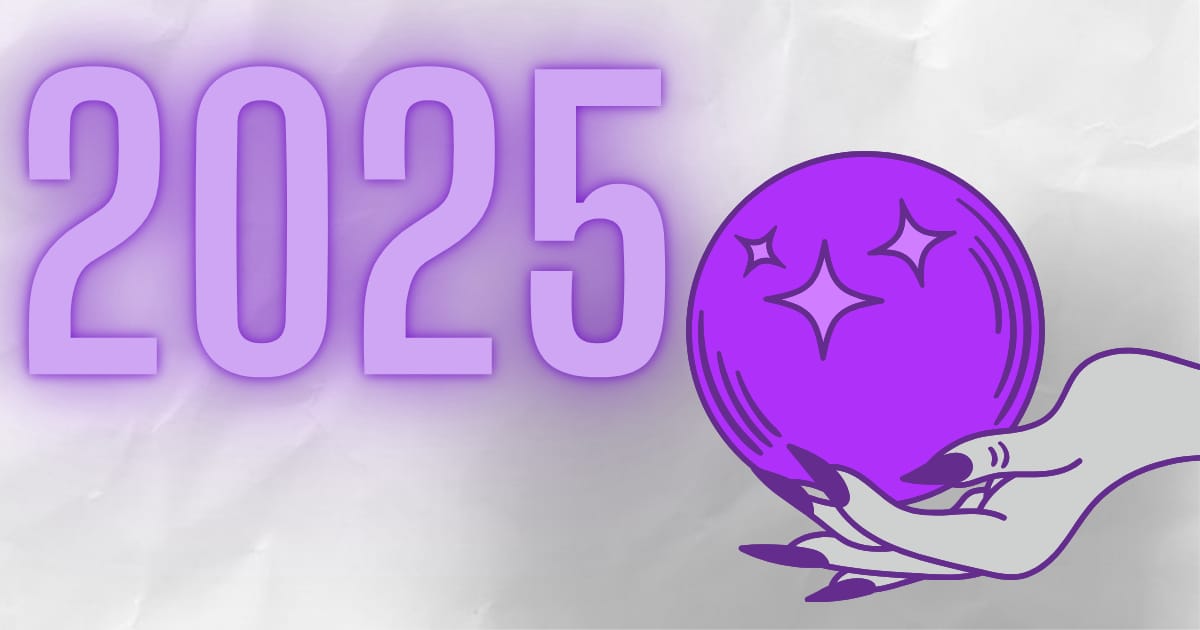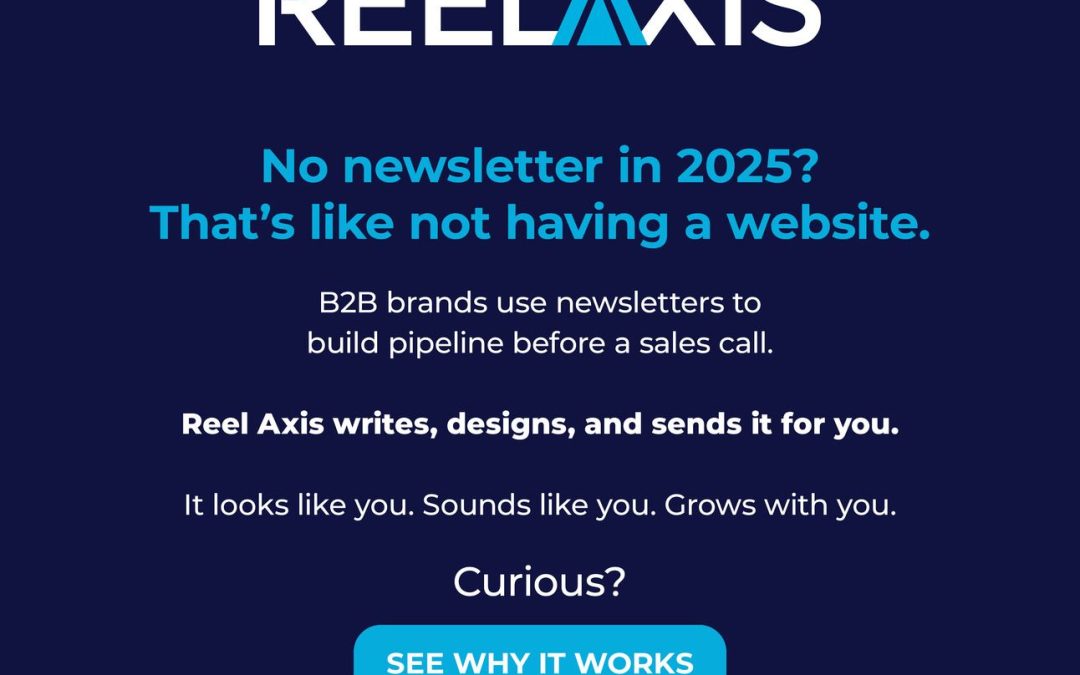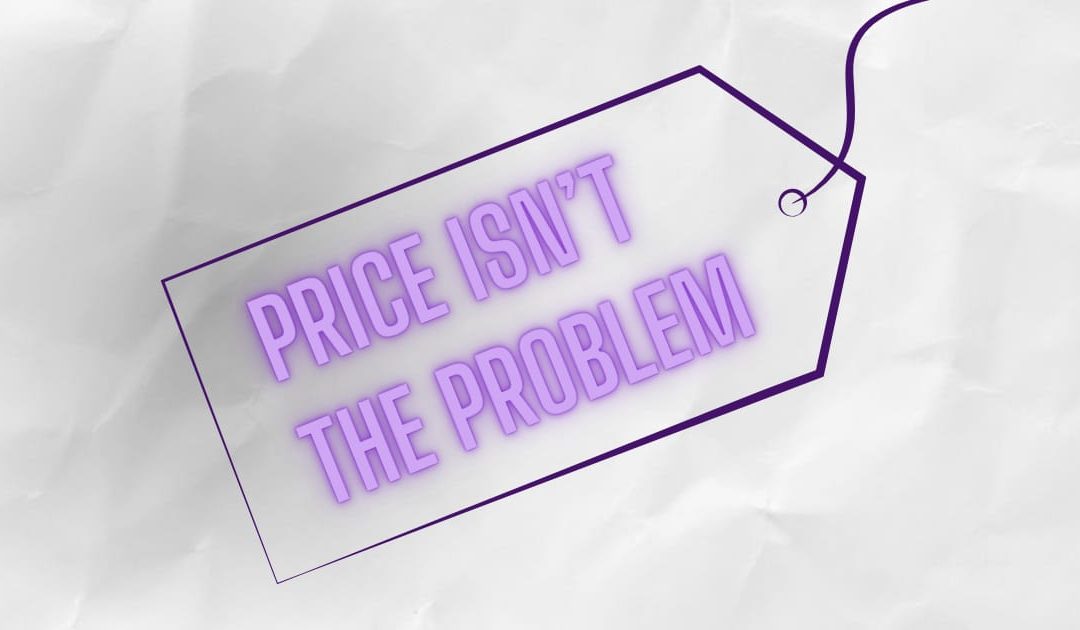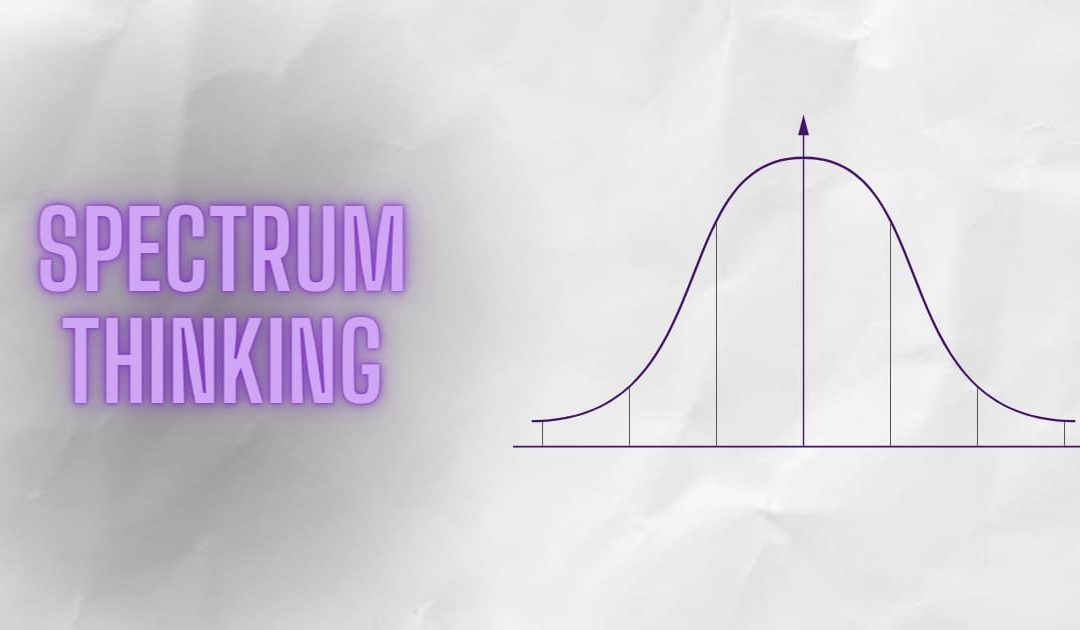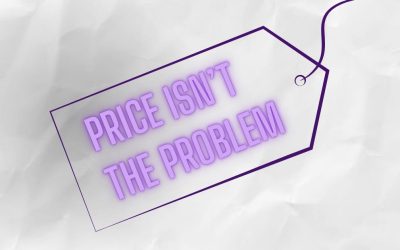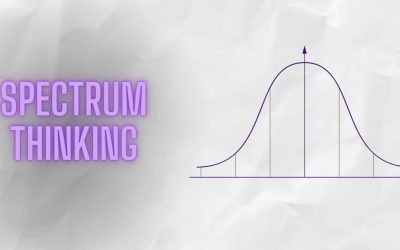Welcome back to Marketing Qualified! It’s hard to believe how quickly this year has flown by. For our final issue of 2024, here’s what we’ve got for you:
-
A look back. What we got right and wrong about our 2024 marketing predictions.
-
Our 2025 marketing predictions. A deep dive into where we think marketing is headed next year.
🔮 Our 2025 marketing predictions.
It’s the last Marketing Qualified issue of the year, which means it’s time for our favorite tradition: predictions for the year ahead!
This is our third year reading our crystal ball (Read 2024 predictions and 2023 predictions), and while we’re not exactly psychic, our track record isn’t half bad.
Before we dive into what’s coming in 2025, let’s look back at what we predicted would happen in 2024. Time to see if we were spot-on or completely off the mark.
What we got right & wrong about 2024.
1. Content gets less formal ✅
Nailed this one. B2B content got way more casual this year. LinkedIn feeds started looking more like TikTok, and even enterprise brands loosened their ties. The days of purely formal white papers and technical spec sheets are fading. We’re seeing more conversational tones in everything from email campaigns to product marketing.
2. Having a POV becomes crucial ✅
Another win. With AI cranking out generic content left and right, the brands that stood out in 2024 were the ones that went the extra mile to add proprietary information, such as personal anecdotes, first-party data, and unique viewpoints. It turns out having actual opinions is pretty good for marketing. Surprise, surprise.
3. B2B embraces UGC 🤔
We were a bit early on this one. While some B2B brands experimented with user-generated content, it hasn’t exactly taken over. Maybe we jumped the gun, or 2025 is the year it finally clicks.
4. Rise of B2B influencers ✅
This one’s trending exactly as we called it. LinkedIn is now packed with ‘corporate influencers,’ and major B2B brands are building entire programs around employee advocacy. Just look at how companies like HubSpot and Salesforce have been empowering their employees to build personal brands.
5. Zero-click content takes over ✅
The algorithms spoke, and marketers listened. Using external links pretty much became poison for engagement on social channels in 2024. Smart B2B brands adapted with standalone, value-packed posts. Don’t believe us? Go to your LinkedIn feed and start scrolling. You won’t see a post that links to an external page unless it’s an ad.
7. Anti-AI companies emerge ✅
Called it! We saw plenty of brands wave the “100% human-made” flag this year. Though interestingly, many of them still use AI behind the scenes. They’re just not building their brand identity around it.
8. Decentralized SEO becomes the norm 🤔
This one’s still playing out. While video search definitely grew, traditional SEO didn’t exactly disappear. Plus, “AI Search” has now emerged as a new landscape since tools like ChatGPT connect directly to the web. Let’s call this one a work in progress.
Scoreboard: 5 hits, 2 “we’ll sees.”
Not bad for amateur fortune tellers! Now, about 2025…
What we think will happen in 2025.
1) The death of “good enough” content.
Remember when you could publish a decent blog post and call it good? Those days are gone.
AI tools have made it way too easy to create average content. Which means average content is everywhere. To stand out in 2025, you’ll need to bring something extra to the table – unique data, fresh perspectives, or real expertise that AI can’t fake.
Think less “10 tips for better marketing” and more “Here’s what we learned spending $50K on LinkedIn ads last quarter.”

Expect marketers to lean more on cross-functional collaboration with data teams, designers, and product experts to create standout content that delivers value no one else can.
2) The rise of AI agents.
Remember chatbots? In 2025, they’re evolving into fully-fledged AI agents. These aren’t just tools to answer FAQs. They’ll write blog posts, launch ad campaigns, and even negotiate vendor contracts.
Think of it as the rise of your new digital coworker. Companies will rely on AI agents to handle repetitive tasks, freeing up marketers to focus on strategy and creativity. The trick? Knowing where human oversight is critical.
Expect job titles like “AI Strategist” or “Agent Manager” to pop up as brands figure out how to harness this new wave of technology.
Marketing use case examples:
-
AI agents analyze performance metrics and content from all your past newsletter posts and draft new issues. However, a human marketer will refine the output with a unique voice.
-
An AI agent monitors your LinkedIn ad performance, adjusts bids, and rewrites underperforming headlines in real time. The human marketer only focuses on strategy.
-
AI agents instantly send tailored follow-up emails, recommend related content, or alert the sales team with customized insights based on a lead’s actions.
3) Email makes a comeback (again).
Every year, “experts” claim that email is dead. But it’s impossible to kill.
In 2025, email won’t just be a channel. It’ll be a competitive advantage. While social algorithms continue to frustrate marketers, email will remain the one platform brands truly own.
But here’s the twist: inboxes are getting smarter.

AI-driven email clients like Gmail and Superhuman will prioritize truly valuable messages and filter out fluff. That means marketers will need to step up their game. The days of “spray and pray” email blasts are over.
What will work?
-
Highly personalized sequences that feel like one-to-one conversations.
-
Interactive emails with embedded surveys or quizzes.
-
Value-packed content that helps readers solve problems (before they even ask).
4) The end of vanity metrics.
Say goodbye to slide decks full of likes, shares, and impressions. In 2025, the C-suite won’t care how many people clicked “like” on your post—they’ll want to know how many deals it drove.
Better attribution tools are exposing the gaps between engagement and actual ROI. Revenue teams will demand accountability, forcing marketers to tie every campaign back to metrics that matter: pipeline growth, deal velocity, and retention.
What this means for marketers:
-
Get comfortable with numbers. Revenue metrics like Marketing Source Revenue (MSR), Customer Acquisition Cost (CAC), and Customer Lifetime Value (CLV) will need to be part of your everyday vocabulary.
-
Expect shorter campaigns. Marketing teams will focus on high-impact experiments with clear goals rather than sprawling, hard-to-measure initiatives.
-
Retention metrics and cross-sell opportunities will be important to long-term revenue strategies.

5) Buying committees will get even bigger.
The days of selling to just 1-2 decision makers are over. In 2025, expect buying committees to expand even further.
We’re seeing companies add more specialized roles to their teams. Each one gets a vote. Each one has concerns you need to address.
Savvy marketers will start creating content for each buying committee role. For example, a CFO needs ROI calculators, while a security officer needs compliance documentation.
Marketers should also focus on empowering their champion(s) within the organization. Give them the tools they need to sell your product internally.
Shift from individual pain points to team-based benefits. Show how your solution makes life easier for everyone involved.
6) Product marketing becomes everyone’s job.
The line between product and marketing is becoming blurrier by the day. By the end of next year, it will likely disappear altogether.
Every marketer will need to understand the product deeply. Every product person will need to think like a marketer. The most successful companies will be the ones where these teams practically finish each other’s sentences.
7) The rise of “small social.”
We think brands will slowly divert budget from mass social platforms and invest in niche, private communities. Think Slack groups, Discord servers, Subreddits, or industry-specific forums.
As trust in mainstream platforms wanes and algorithms become more unpredictable, brands will turn to “small social” for deeper engagement. These curated spaces allow for honest conversations, community building, and higher-quality leads.
Small groups foster intimacy and trust, making them perfect for nurturing long-term relationships with high-value prospects.
What this might look like:
-
A CRM brand launches a private Slack group for sales leaders to share tips and challenges.
-
A SaaS company runs an invite-only Discord server for early adopters to test new features.
-
Marketing teams create exclusive content for an industry-specific subreddit they belong to.

The challenge for brands will be maintaining authenticity in these communities. Small social thrives on trust, and overly salesy tactics will alienate members. Expect brands to hire community managers to facilitate meaningful conversations rather than just pushing products.
Final Thoughts.
If there’s one takeaway from these predictions, it’s that the marketing landscape is evolving faster than ever.
In 2025, success will belong to marketers who can adapt quickly, experiment boldly, and keep their focus on delivering real value.
The opportunities are exciting (and a little daunting). But here’s the silver lining: the basics of great marketing haven’t changed. Know your audience, tell compelling stories, and measure what matters.
So, whether you’re ready to dive into “small social,” revamp your email strategy, or finally let go of those vanity metrics, next year is your chance to take things up a notch.
Here’s to staying creative, staying curious, and making 2025 your best marketing year yet!
📰 In the news this week.
🤝 The best brand collabs of 2024.
🍿 Movie theaters are the new programmatic ad hotbed.
🤖 This company stopped hiring because AI ‘can already do all of the jobs.’
🔎 How to use ChatGPT for keyword research (with actual prompts).
💥 This AI company is trying ‘dystopian’ marketing.
😂 Marketing meme of the week.

How’d we do with this week’s newsletter?
A READER’S REVIEW

Enjoy this newsletter? Forward it to a friend to spread the love.
Want us to write about something specific? Submit a topic or idea.

